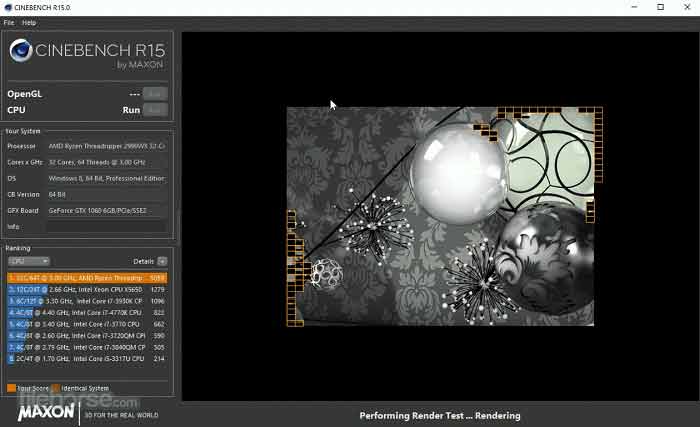

Despite this it would have been nice to see some more significant performance gains from team green. You can see in the GPU optimisation numbers that it rarely if ever strays from green frame times, indicating that for the GTX 1060 this really is a stroll in the park. That said it feels like the frame rate swings are slightly less wild in Vulkan, maintaining more consistent performance. Throughout the gameplay, both the minimum and maximum FPS are in fact lower using Vulkan, with OpenGL reaching a high of 165 frames per second at one point. That’s marginal at best, and not a clear indicator of Vulkan’s benefits in action.

In fact, those averages are incredibly similar, with just 2.7 frames per second in it. Both OpenGL and Vulkan have average frame rates around 100 FPS, perfect for DOOM’s silky smooth gunplay.

OPENGL 4.5 BENCHMARK SOFTWARE 1080P
Whichever way you slice it, DOOM runs like a dream at 1080p on Ultra with the 1060. Nevertheless, the 5820K is backed up by 16GB DDR4 memory and the aforementioned MSI GeForce GTX 1060 Gaming X 6G. Where Vulkan really thrives is in CPU bottlenecked scenarios, so it’s impact won’t be as keenly felt here. Unfortunately (or fortunately I guess) I’m sat here with a very beefy Intel Core i7-5820K processor. It’s been likened to a console-like level of optimisation, squeezing out the maximum potential performance out of the hardware available to a user. Vulkan is low overhead API which builds on the achievements of AMD’s ill-fated Mantle, offsetting CPU usage to the GPU and more effectively distributing workloads across multiple CPU cores. Well now we’ve got time, so we’ve been putting MSI’s GeForce GTX 1060 Gaming X 6G through its paces in DOOM, which was recently updated with optional Vulkan graphics API support.īoot up DOOM and you’re now presented with two options - the original OpenGL 4.5, or the newer Vulkan standard. Let’s start out with Manhattan, GFXBench’s newest High-Level test, and the first serious OpenGL ES 3.0 benchmark to hit the scene.Yesterday we got a pair of GeForce GTX 1060 reviews up, but due to time constraints we weren’t able to squeeze out any Vulkan performance benchmarks. Imagination Technologies PowerVR SGX544MP3 (tri-core) 480 MHzĪRM Cortex-A15 (quad-core) 1.9 GHzARM Cortex-A7 (quad-core) 1.2 GHzĪRM Mali-T628MP6 (hexa-core) 480-600 MHz Imagination Technologies PowerVR G6430 (four-cluster) 300 MHzĪRM Cortex-A15 (quad-core) 1.8 GHzARM Cortex -A15 (single companion-core) 500 MHzĪRM Cortex-A15 (quad-core) 1.6 GHzARM Cortex-A7 (quad-core) 1.2 GHz
OPENGL 4.5 BENCHMARK SOFTWARE DRIVER
A Driver Overhead test shows how heavily a CPU complex is affected by draw calls and state changes. One version forces the shaders to run with high precision, and the other doesn't. In addition, there’s a new set of render quality tests that evaluate a device's fidelity by comparing a single rendered frame to a reference, scoring the outcome in peak signal-to-noise ratio. An ALU test was added to calculate raw shader performance, while the new Alpha Blending test does the same for rendering multiple transparent objects on top of each other. The Low Level performance benchmarks have also been improved over v2.7. In its place is the far more demanding Manhattan test, utilizing OpenGL ES 3.0-specific complex lighting, particles, and, most important, deferred shading. Naturally, it's no longer challenging for mid-range and high-end SoCs.

The old faithful Egypt HD test from v2.5 retires, which makes sense, since even modern entry-level graphics engines power through it with ease. Version 3.0 expands the software's scope, retaining only one sequence from previous builds: the OpenGL ES 2.0-level T-Rex HD from GFXBench v2.7. Previous GFXBench versions were comprised of traditional “high-level” game-like scenarios along with more “low-level” tests designed to measure specific subsystems.


 0 kommentar(er)
0 kommentar(er)
